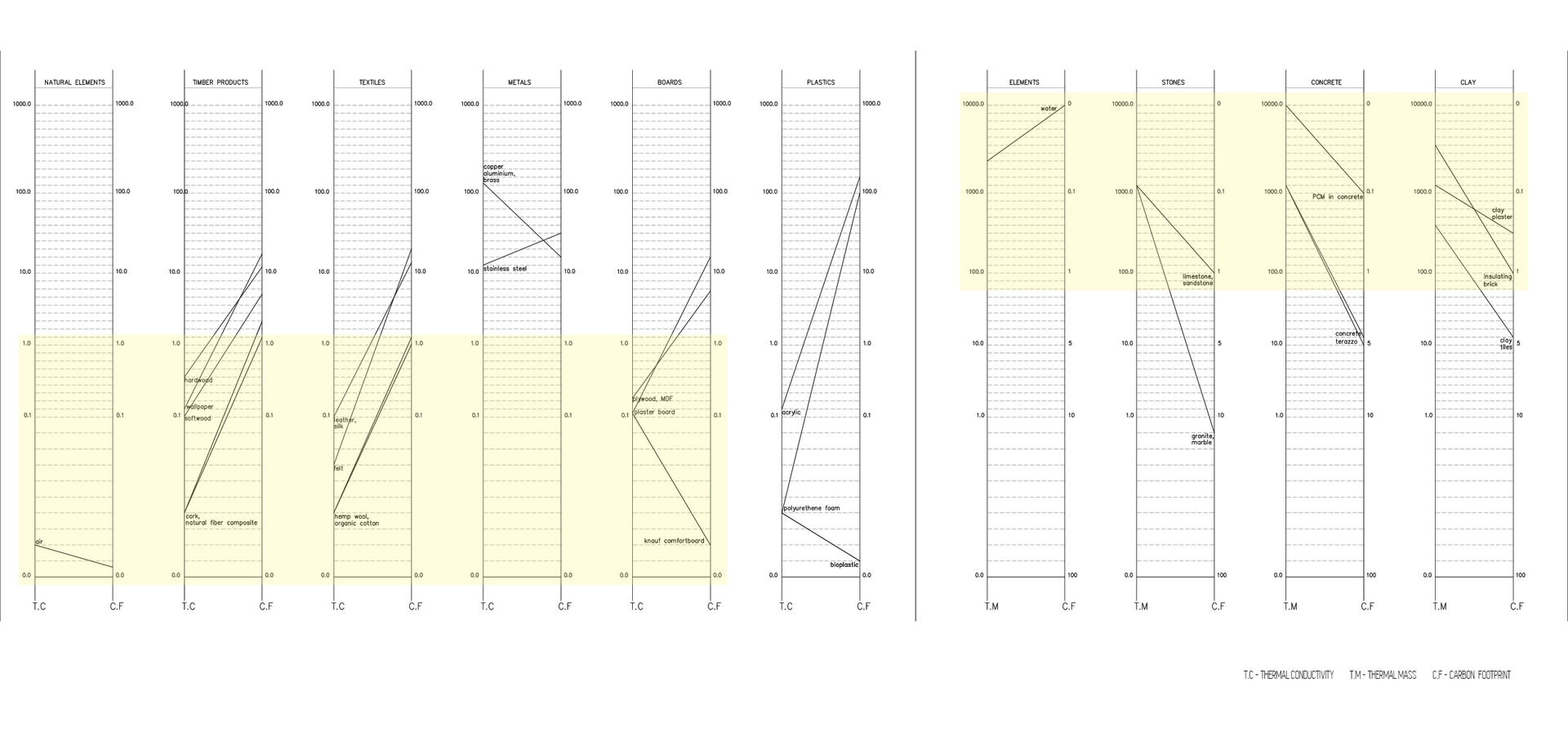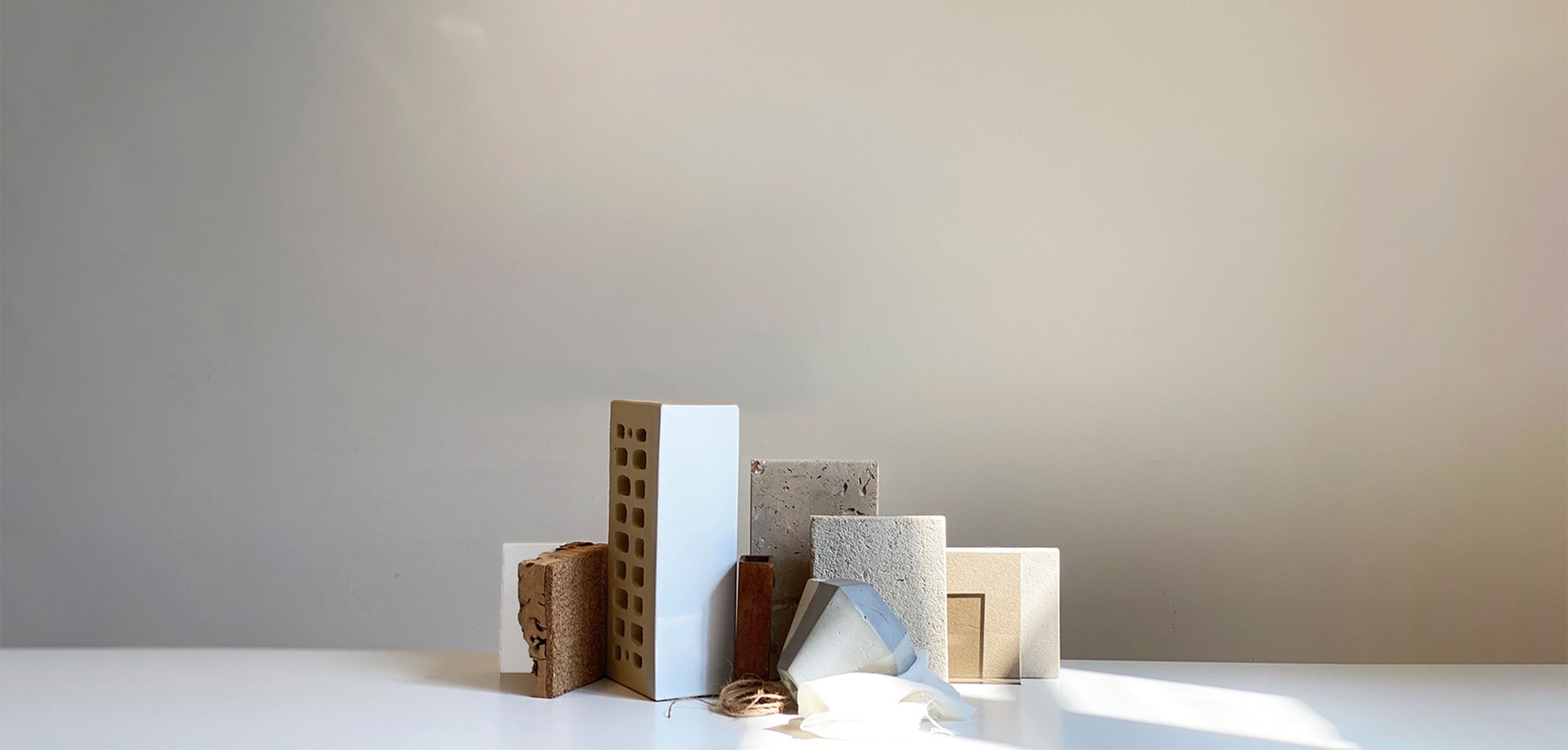Prakruthi Rao

MATERIAL CATALOGUE — Materials were analyzed for their thermal performance measured against their carbon emissions. Thermal performance was measured based on thermal conductivity / thermal mass depending on which quality they were more responsive to. Thermal performance of heavier materials were determined by thermal mass and lighter materials by thermal conductivity. Materials of low thermal conductivity, high thermal mass and low carbon emission were most suitable.

COLLECTION OF MATERIALS FOR SUMMER — the cataloguing of materials led to the development of a tool-kit of materials suited for summer.
— A series of esoteric Summerhouse interiors designed as a musician’s study, a meditative retreat and a reader’s room determined by material choice and use.
![[untitled]](https://res.cloudinary.com/rca2020/image/upload/f_auto,h_918,w_1920,c_fill,g_auto,q_auto/v1/rca2021/60c72f5c101fec8c9fbfce96-658607?_a=AXAH4S10)
— A Summerhouse for a musician to write, practice music and unwind in the summer. Cork and hemp are materials most suited for the interior of a musician's summerhouse. Both materials are ecological thermal and sound insulators. They are also sustainable materials with low carbon footprint.
The diagram on the right shows acoustic and thermal performance of cork based on material qualities. Cork performs as a buffer between inside and outside.
— Natural cork is used for walls and painted cork for the ceiling to create a perception of lightness and brightness. Stained oak wood floor is durable and a natural contrast to the soft cork interior.
![[untitled]](https://res.cloudinary.com/rca2020/image/upload/f_auto,h_918,w_1920,c_fill,g_auto,q_auto/v1/rca2021/60c72f5c101fec8c9fbfce96-301629?_a=AXAH4S10)
![[untitled]](https://res.cloudinary.com/rca2020/image/upload/f_auto,h_918,w_1920,c_fill,g_auto,q_auto/v1/rca2021/60c72f5c101fec8c9fbfce96-731722?_a=AXAH4S10)
— The flexibility of cork is harnessed to create an organic space free of sharp edges. This also improves the acoustic quality of the space.
The contrast of the cork walls to the stained oak floor adds character to the space. The wooden flooring provides durability and connects the user to the surrounding garden or landscape.
![[untitled]](https://res.cloudinary.com/rca2020/image/upload/f_auto,h_918,w_1920,c_fill,g_auto,q_auto/v1/rca2021/60c7314a101fec8c9fc839ec-184294?_a=AXAH4S10)
— Clay and hemp are materials most suited for the interior of a meditative retreat. Hemp fabric is a natural air filter due to its porous nature. Clay bricks have high thermal mass and the ability to even out temperatures between peak hours. Warm air filtered through hemp screens is cooled in the interior on passing over a water body. Unfired clay plaster on the walls regulated the moisture content in the space. The mechanism of evaporative cooling is applied.
![[untitled]](https://res.cloudinary.com/rca2020/image/upload/f_auto,h_918,w_1920,c_fill,g_auto,q_auto/v1/rca2021/60c7314a101fec8c9fc839ec-696657?_a=AXAH4S10)
— Material compositions based on my studies of cork and hemp. The quality of light and shadow in the interior created by hemp fabric screens adds to the character of the space.
![[untitled]](https://res.cloudinary.com/rca2020/image/upload/f_auto,h_918,w_1920,c_fill,g_auto,q_auto/v1/rca2021/60c7314a101fec8c9fc839ec-938131?_a=AXAH4S10)
— The heaviness of the brick floor is grounding and a contrast to the lightness of the hemp screens. A protective and soothing interior atmosphere is created.
![[untitled]](https://res.cloudinary.com/rca2020/image/upload/f_auto,h_918,w_1920,c_fill,g_auto,q_auto/v1/rca2021/60c7314a101fec8c9fc839ec-128416?_a=AXAH4S10)
— The inherent qualities of natural elements like air and water enable the performance of the interior.
A space of calm. To relax, meditate and unwind in the summer.
![[untitled]](https://res.cloudinary.com/rca2020/image/upload/f_auto,h_918,w_1920,c_fill,g_auto,q_auto/v1/rca2021/60c731b4101fec8c9fca1f39-667832?_a=AXAH4S10)
— An easy space for reading and relaxing during summer. Limestone and glass are materials most suited for the interior of a reader's room.
The diagram on the left shows the strategic use of different types of glass. Frosted glass used in the top two panels allows diffused, soft light into the space whereas thermal glass in the lower panel allows views to the outside, while protecting one from the discomfort of glare.
![[untitled]](https://res.cloudinary.com/rca2020/image/upload/f_auto,h_918,w_1920,c_fill,g_auto,q_auto/v1/rca2021/60c731b4101fec8c9fca1f39-718115?_a=AXAH4S10)
— Material studies showing the quality of light that is expected in the space. The shadows formed on the lime plaster are indicative of the types of natural light expected in the space- soft and diffused vs clear and strong.
![[untitled]](https://res.cloudinary.com/rca2020/image/upload/f_auto,h_918,w_1920,c_fill,g_auto,q_auto/v1/rca2021/60c731b4101fec8c9fca1f39-908496?_a=AXAH4S10)
![[untitled]](https://res.cloudinary.com/rca2020/image/upload/f_auto,h_918,w_1920,c_fill,g_auto,q_auto/v1/rca2021/60c731b4101fec8c9fca1f39-18665?_a=AXAH4S10)
— Limestone in the form of travertine stone is used for flooring. Lime plaster is used for the walls. The lime content in both these materials makes them cool to touch even in warm weather creating a moment of relief and comfort.
![[untitled]](https://res.cloudinary.com/rca2020/image/upload/f_auto,h_918,w_1920,c_fill,g_auto,q_auto/v1/rca2021/60cd9dff98de755bbfd0f610-829643?_a=AXAH4S10)
— Design exercises undertaken to explore material combinations, joints and junctions.